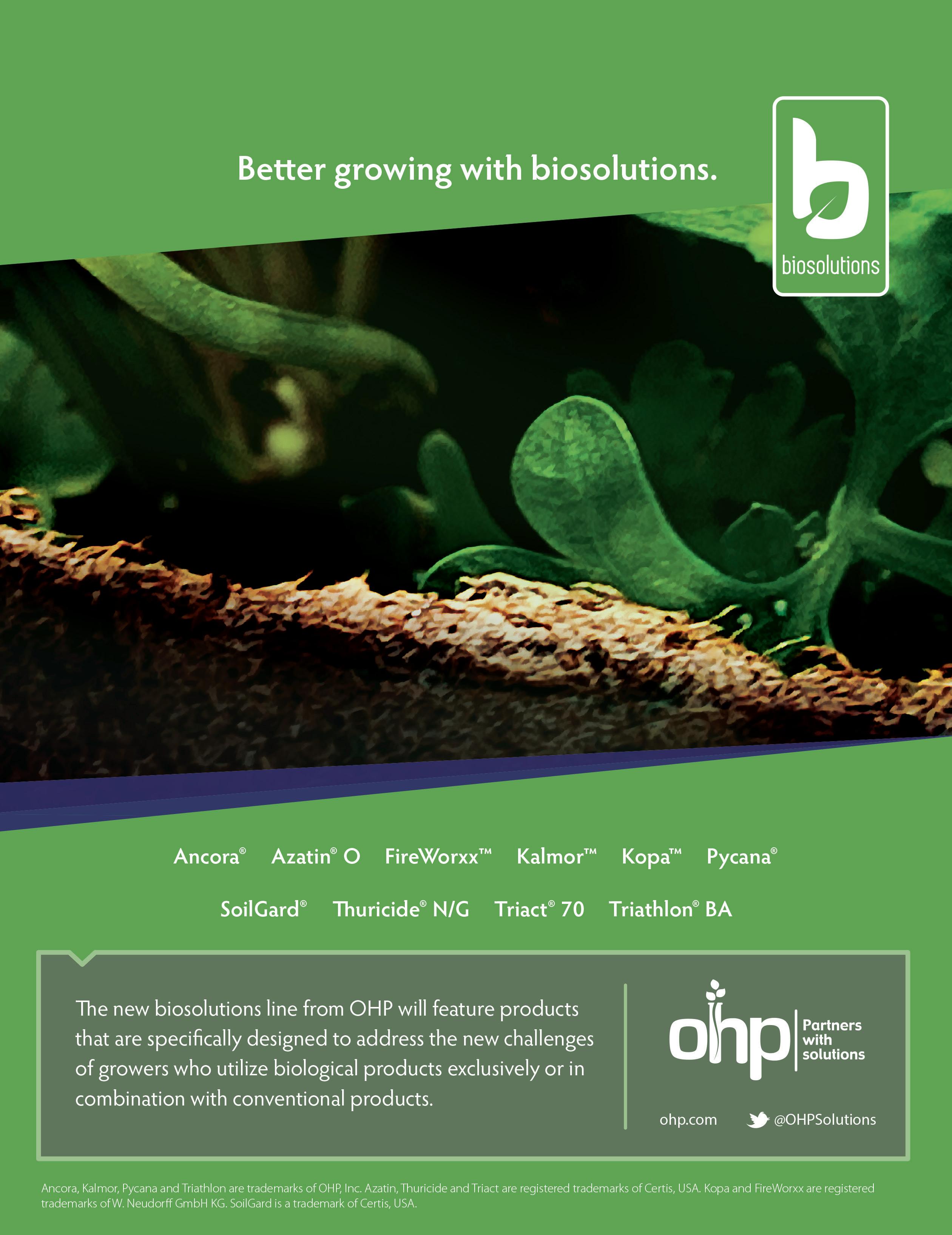
1 minute read
Quiz
From the article “Using Biochar as Container Substrates in Horticulture Production,” in greenhouse production, which of the following is NOT considered a current major container substrate?
a. peat moss b. perlite c. biochar d. vermiculite
From the article “Using Biochar as Container Substrates in Horticulture Production,” what is the concern over harvesting peat moss from peatland?
a. Peatland serves as a large natural carbon sink to mitigate climate change. b. Peat Moss is getting too expensive to harvest. c. Shipping costs of peat moss to the US continues to increase. d. There are no concerns with harvesting peat moss from peatlands.
From “Using Biochar as Container Substrates in Horticulture Production,” biochar is a byproduct of...?
a. burning carbon b. pyrolysis c. burning organics d. pyrotechnics
From the article “SFA’s Trialing Garden,” how large does Summer Ruffle Althea reportedly get?
a. 2’ x 3’ b. 3’ x 4’ 3. 4’ x 5’ 3. 5’ x 6’
From the article “Thrips Causing Grief?” thrips are not most often considered pests.
a. True b. False
From the article “Thrips Causing Grief?” thrips use their mouthparts to cause sucking damage.
a. True b. False
From “Thrips Causing Grief?” why is it challenging to make thrips come in contact with insecticides?
a. Thrips are winged insects, so they fly around too much. b. Thrips species lay eggs in plant tissue and pupate in the soil. c. Thrips are too small to come in contact with insecticide droplets. d. Thrips are to fast to spray effectively.
From the article “Thrips Causing Grief?” what can the writers not stress enough?
a. Always check your surroundings before spraying. b. Always read the label. c. Always go straight to pesticides to control
Thrips. d. Always call the Bugs & Fuzz team when you encounter Thrips.
From the article “A Tribute to the Nursery/Landscape EXPO,” what year was the first EXPO?
a. 1950 b. 1955 c. 1960 d. 1965




